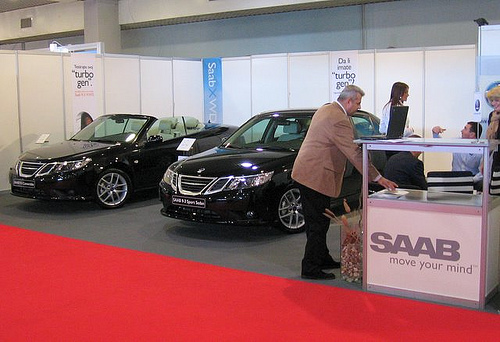Electronic stability program (ESP) also referred to as Electronic stability control (ESC), or dynamic stability control (DSC), is a computerized technology that improves the safety of a vehicle’s stability by detecting and reducing loss of traction (skidding).
The video is in Swedish, but basically the first part is with the ESP off and the next is with it on.
When ESC detects loss of steering control, it automatically applies the brakes to help “steer” the vehicle where the driver intends to go. Braking is automatically applied to wheels individually, such as the outer front wheel to counter oversteer or the inner rear wheel to counter understeer. Some ESC systems also reduce engine power until control is regained.

Modern ABS system from SAAB incorporates electronic brake-force distribution (EBD – electronic brakeforce distribution) and an electronic traction-control system (TCS). The new ESP system works with TCS, which requires a modified ABS system tuned to the parameters of ESP.
ABS+EBD+TCS +ESP – Saab’s ESP system uses all these inputs to calculate the car’s behavior. But it also has the advantage of the extra yaw and steering wheel sensors, allowing smoother TCS and ESP control because the engine-management system is given more information to “understand” the car’s behavior and then react accordingly.
This videos demonstrating the benefits of Saab’s Electronic Stability Program (ESP):
Effectiveness of the SAAB ESP, skip to 2:09 when ESP is turned Off:
New Saab 9-5 ESC Test: The test is a sine with dwell manoeuvre at 50mph and comprises a sinusoidal steer in one direction, followed by a steer in the opposite direction, with a dwell of 500 milliseconds at the second peak. It is controlled by a steering robot to give a precise and repeatable steering input, and the runs build up to a steering wheel angle of 270 degrees:











